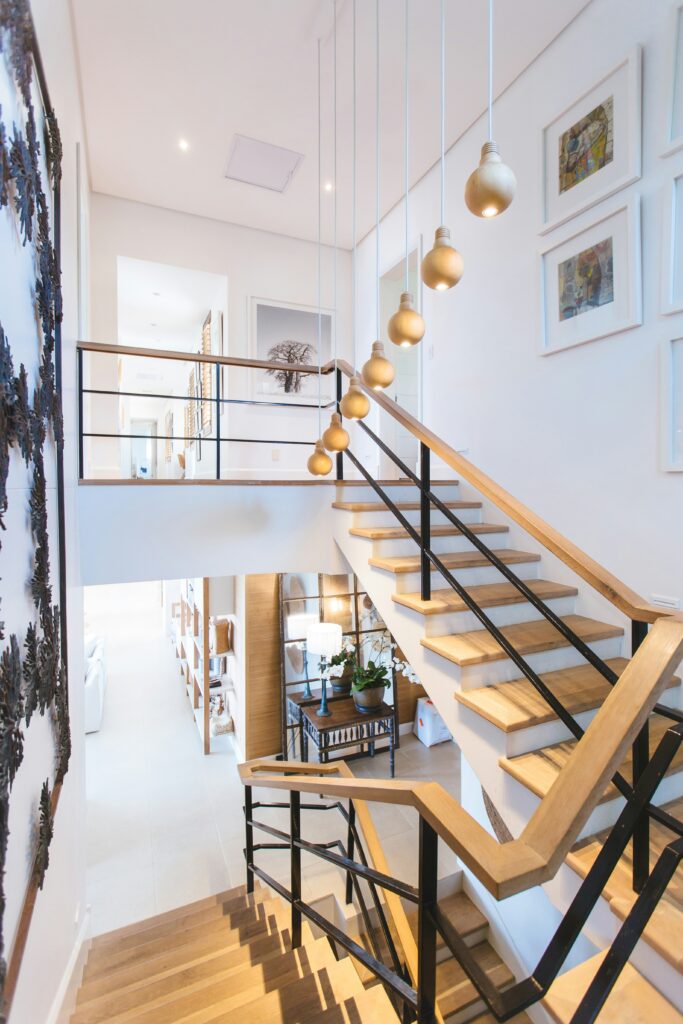Vastu for Stairs
In the intricate world of Vastu Shastra, the ancient Indian system for designing harmonious living spaces, every element holds significance. From the placement of rooms to the flow of energy, Vastu principles aim to create positive energy and well-being for residents. And stairs, being a crucial element for navigating different levels, are no exception. Here’s a comprehensive guide to understanding Vastu for stairs, ensuring your steps lead towards peace and prosperity.
Finding the Right Spot: Placement of Stairs
The ideal placement for your staircase depends on the direction. According to Vastu, the most auspicious positions are:
Southwest: This direction is considered the most favorable, promoting good health, stability, and success.
South: Known for its association with fire energy, the south is believed to bring dynamism and progress.
West: This direction is linked to positive change and growth, making it a suitable choice for staircases.
Avoiding Imbalances: Where Not to Place Stairs
While the aforementioned directions are ideal, Vastu emphasizes avoiding certain areas:
Northeast: This zone represents spiritual growth and knowledge. Placing the staircase here is believed to create obstacles in these aspects of life.
Center: The central portion of the house signifies the heart and stability. A staircase in this area is said to disrupt harmony and well-being.
Above or below worship rooms or pooja areas: These spaces hold immense spiritual significance, and having a staircase above or below them is considered disrespectful and inauspicious.
The Flow of Energy: Direction and Design of Stairs
Vastu emphasizes the importance of the direction in which the staircase turns. Experts recommend a clockwise movement, meaning the stairs should ascend either from north to south or east to west. This is believed to promote positive energy flow and career growth. Conversely, an anti-clockwise direction is said to create challenges in career pursuits.
Maintaining Balance: The Number of Steps
The number of steps in your staircase also holds significance in Vastu. Ideally, the number should be odd, representing balance and stability. Avoid even numbers, especially those ending in zero, as they are considered inauspicious. If space constraints necessitate an even number, adding a landing or an extra step at the beginning or end can help rectify the imbalance.
Additional Tips for a Vastu-compliant Staircase
Lighting: Ensure proper lighting on the stairs to avoid dark corners, which can create negative energy.
Mirrors: Avoid placing mirrors directly opposite the stairs, as they are believed to reflect negative energy back into the space.
Storage: Refrain from using the space under the stairs for storage, as it can create a feeling of clutter and stagnation.
Materials: Opt for natural materials like wood or stone for the staircase construction, as they are considered more harmonious with Vastu principles.
Remember: Vastu is not a rigid set of rules, but rather a guide to creating a space that fosters well-being. While incorporating these principles can be beneficial, it’s essential to consult with a qualified Vastu expert for specific recommendations tailored to your unique space and needs.
By following these guidelines and adapting them to your specific situation, you can ensure your stairs not only offer practical functionality but also contribute to creating a harmonious and positive environment in your home.


Industrial Vastu: Enhancing Productivity and Prosperity in Your Factory

Vastu Directions: Unlocking the Secrets to Prosperity in Vastu Shastra




